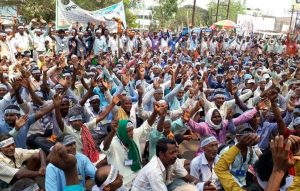 By Nageshwar Patnaik in Bhubaneswar, February 19, 2021: India needed a crisis to reform. It got one in 1991. The country faced balance of payments crisis in 1991, which virtually compelled the powers-that-be to dismantle its socialist economy, ushering in private enterprise and years of higher growth. India had opted for a centrally planned economy in the 1950s under the then Prime Minister Jawaharlal Nehru.
By Nageshwar Patnaik in Bhubaneswar, February 19, 2021: India needed a crisis to reform. It got one in 1991. The country faced balance of payments crisis in 1991, which virtually compelled the powers-that-be to dismantle its socialist economy, ushering in private enterprise and years of higher growth. India had opted for a centrally planned economy in the 1950s under the then Prime Minister Jawaharlal Nehru.
But by 1991, the economy came to a grinding halt and faced a massive crisis. And this crisis led the then finance minister, Dr Manmohan Singh to undo the mistakes of decades of restrictions, red-tape and an inward-looking approach. The economic liberalisation drive by Dr Manmohan Singh and then Prime Minister Narasimha Rao unleashed the latent animal spirits in the economy and the rest is history.
Many economists say those developments would not have taken place without the debilitating balance-of-payment crisis at the time. Even the Atal Bihari Vajpayee administration’s strategic sales of state-run companies such as ITDC and VSNL came at a time when the country was reeling under severe US sanctions, following the 1998 nuclear tests. India has once again lived up to reputation of using a crisis to reform itself.
The coronavirus outbreak pushed the global economy to its worst slowdown since the great recession of 1929, forcing India to impose a nationwide lockdown between late-March and May, leading to a huge jump in unemployment, exodus of migrant workers from cities, and collapse in private consumption and investment demand.
This was once again a crisis time for the country and Prime Minister Narendra Modi’s government was expected to use the country’s Covid-induced slump to launch similar dramatic and wide-ranging reforms. But Modi disappointed not because he was afraid of bold initiatives and lacked the political will to carry out the reforms.
According to experts, the Modi government and the bureaucracy, unlike in 1991, aren’t set up to develop a consensus behind liberalizing reforms.
Needless to say that agricultural reform was the much needed one as it would have addressed the complex issues of fragmented land holdings of small and marginal landholders, low productivity, degraded soil, and very poor incomes of farmers. What the government did was to rush through, in a completely undemocratic fashion, a set of reforms that turned out to be unacceptable to all kinds of farmers, rich and poor alike.
 The farmers strongly believed that the fundamental problems of their livelihoods were not being addressed as there was a threat that agriculture would now be controlled by a few large corporate houses making the prospects of the farmers’ future prosperity even bleaker. Incidentally, Modi backed them to the hilt against relentless protests by farmers.
The farmers strongly believed that the fundamental problems of their livelihoods were not being addressed as there was a threat that agriculture would now be controlled by a few large corporate houses making the prospects of the farmers’ future prosperity even bleaker. Incidentally, Modi backed them to the hilt against relentless protests by farmers.
But since the overall package gave the impression that the state was going to retreat from grain procurement, leaving farmers at the mercy of large business groups, it became a controversial issue in the backdrop of the ongoing state elections in Uttar Pradesh and four other states. So Modi dropped his ambitious plan, closing the door at least for some years on reforms of the subsidy-ridden farm and food economy. Now it looks like the new labor codes are going into cold storage, too.
Reforms have to be carried out carefully by tactfully building political consensus. Thrusting upon the people may make everybody averse to future reforms.
Another crucial reform which previous governments had been wary about is changing the labour market regulations. Again, the Modi government brought in a set of reforms without much consultation in Parliament or engagement with stakeholders such as labour unions. The reforms were basically a consolidation and the bringing together of different sets of laws and regulations under one umbrella. Certain benefits envisaged in the reforms would be difficult to handle and monitor, while others opened the door for increasing exploitation of the workers.
Ironically, more than 90 per cent of workers in India are from the informal sector and the gig economy. Their conditions were always precarious while working, or while being unemployed. The precondition of a well-thought-out safety net would be required to allow quick reallocations of labour in an economy undergoing rapid technological change.
Thirdly, disinvestment of public sector undertakings, especially the non-strategic, loss-making ones, was expected to be a major catalyst for markets to attract private investments. This has also failed. Every time the government announces grand plans and makes ambitious budget allocations, the result turns out to be exceptionally weak and inadequate
The government’s only achievements in terms of reforms were the privatization of Air India and India climbing in the World Bank’s ranking of countries in terms of the ease of doing business. However, that got misted up too, as the rankings were withdrawn and the World Bank started an investigation of its own to find out whether data were accurate or reliable.
The prime minister, no doubt, had the propensity to shock and awe through radical policy announcements. One such was the declaration of demonetization. It was supposed to get rid of black money, nudge people towards cashless transactions, and deter money-laundering for criminal activities like terrorism and drug smuggling. It turned out to be chaotic. Black money did not go away, and the Reserve Bank of India computed that more cash was returned to it for exchange than was supposed to be in circulation.
 What happened in the process was that the micro, small and medium sectors of the economy got battered. The sectors shrank significantly with many jobs and livelihoods disappearing into bankruptcy. The pandemic’s mismanagement in the first wave in 2020 further washed away the MSME sectors of the economy.
What happened in the process was that the micro, small and medium sectors of the economy got battered. The sectors shrank significantly with many jobs and livelihoods disappearing into bankruptcy. The pandemic’s mismanagement in the first wave in 2020 further washed away the MSME sectors of the economy.
Working in a multi-language, multi-religious, diverse, federal democracy like India requires careful consensus-building among states and transparency in sharing the information with the nation, which Modi and his administration should be aware of.


Leave a Reply
Be the First to Comment!